Best Women’s Ski Goggles of 2024
Here’s everything you need to know about how to choose ski goggles, including features, fit, lens color & style. We’ve included our favorite ski goggles too!
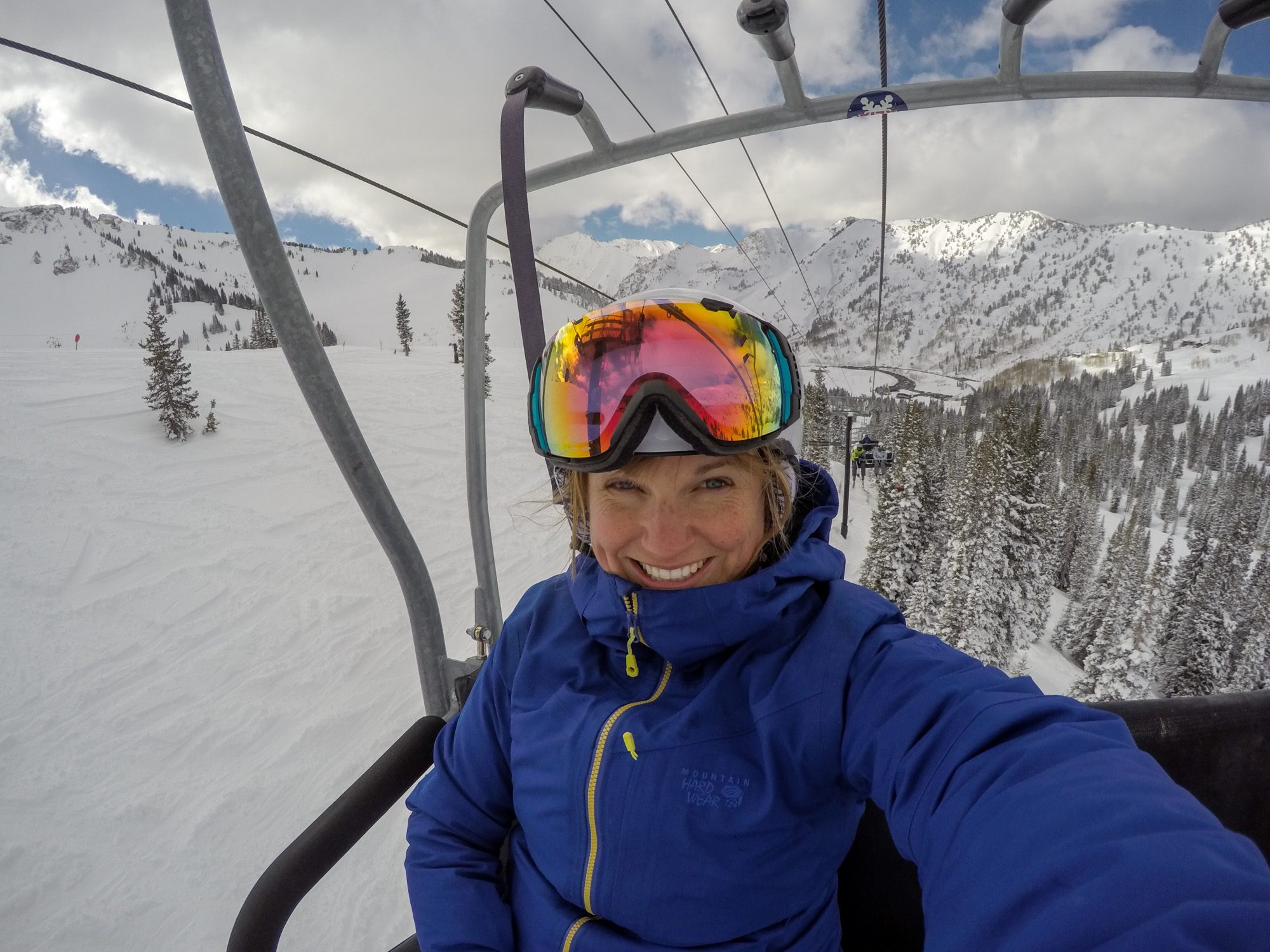
Having good visibility on the mountain is an essential part of staying safe, skiing well, and having fun. But choosing the right pair of women’s ski goggles can be overwhelming when you don’t know where to begin or what you’re looking for. There are different lenses for all kinds of conditions and terrain.
It’s much easier to narrow down your options (and there are plenty!) when you have a better understanding of what you need in a ski goggle. In this post, we share our best tips for how to choose the right pair of ski goggles for you and recommend a few of our favorites.
Score the perfect pair of women’s ski goggles with this complete guide on what to look for and more
Why Do You Need to Wear Ski Goggles?
Wearing ski goggles protects your eyes from the elements better than sunglasses. Be it ice, snow, or UV rays that reflect off the snow, there are many factors that might hurt or damage your eyes. Ski goggles have a snug fit and plenty of coverage for warmth on chilly days when your face would otherwise be cold.
Plus, speeding down the mountain without anything to cover your eyes isn’t exactly the best way to see where you’re going!
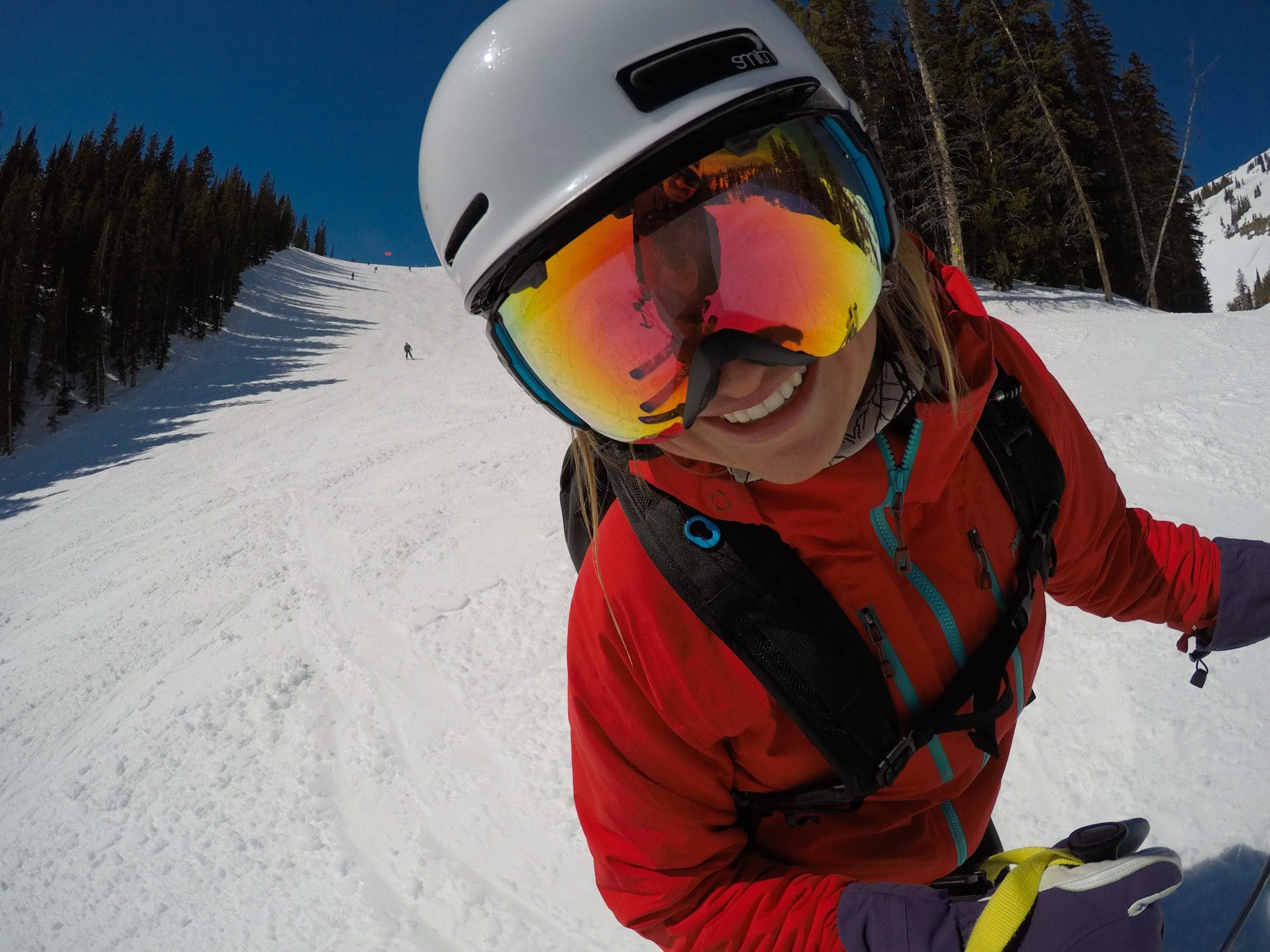
Best Women’s Ski Goggles for $300 and Under
If you’re new to buying ski goggles it’s important to know that every style comes in a multitude of colors. We just put an example of each goggle to give you a visual. If you are looking for a set color scheme for your slope attire or lighting conditions, just click to see the array of color designs each goggle comes in.
Anon WM1 Women’s Ski Goggles
These high-performance Anon WM1 ski goggles are what I’ve been wearing for the last two seasons, and they have a lot going for them. They’re designed with all the best features including spherical lenses for optimal visibility, anti-fog treatment, helmet and eyewear compatibility, and they come with a bonus extra lens. Out of all of the ski goggles I’ve tried, these magnetic lenses are the quickest and easiest to swap out when the light changes without even having to take your goggles off.
Another cool feature of these goggles is the face mask integration that seals your face mask to the goggles via magnets without inhibiting ventilation. I will say that with the face mask, I do experience some fogging, so I prefer to wear a buff that does create a seal around my nose instead.
One bonus lens is included with each goggle, but you can also purchase additional interchangeable lenses for variable light conditions.
- Lens type: Spherical
- Interchangeable lenses: Yes, magnetic
- Anti-fog treatment: Yes
- Eyewear compatible: Yes
- MSRP: $274.95
Check price: Backcountry / REI / evo
Anon WM3 Goggles
The only difference between the Anon WM1 and the Anon WM3 goggles is that the WM3’s have a cylindrically-shaped lens rather than a spherical lens. This reduces peripheral vision slightly and can result in a bit more glare from the bright snow or sun. That being said, these are still excellent women’s ski goggles and a great choice for any skier or snowboarder.
One bonus lens is included with each goggle and they come in multiple lens colors for different light conditions. You can also purchase additional lenses for brighter or darker situations.
- Lens type: Cylindrical
- Interchangeable lenses: Yes, magnetic
- Anti-fog treatment: Yes
- Eyewear compatible: Yes
- MSRP: $234.95
Check price: Backcountry / evo
Smith I/O MAG S ChromaPop Goggles
The Smith I/O MAG S ChromaPop Goggles are designed to fit smaller faces, making them a perfect women’s ski goggle. The lenses also have ChromaPop technology, which boosts color and increases contrast, so you can more easily make out bumps and obstacles on the mountain.
The lenses are attached via a magnetic interchangeable lens system, so you can easily swap lenses depending on conditions. There are two ChromaPop lenses included, one for bright light and one for low light.
- Lens type: Spherical
- Interchangeable lenses: Yes, magnetic
- Anti-fog treatment: Yes
- Eyewear compatible: Yes
- MSRP: $270.00
Check price: Backcountry / REI / evo
Oakley Flight Deck M Goggles
The Oakley Flight Deck google isn’t women-specific per se, but the Medium model is downsized from the large to provide a more compact mid-sized fit that works well with most women’s faces. In addition to a huge spherical lens, these goggles also boast over 20 different lens color options for all light ranges from low-light stormy conditions to bright bluebird days. Shop for replacement or additional lenses here.
If you wear eyeglasses, these goggles have a clever temple notch to make them more comfortable for long days on the slope.
- Lens type: Spherical
- Interchangeable lenses: Yes, sub-frame attachment system
- Anti-fog treatment: Yes
- Eyewear compatible: Yes
- MSRP: $207.00
Check price: evo / Backcountry / REI
Best Women’s Ski Goggles for $200 and Under
Giro Ella Goggles
Comfortable with unobstructed, panoramic views, the Giro Ella Goggles are a great mid-priced women’s ski goggle. They come with VIVID lens technology that improves snow vision by enhancing blue light to strengthen contrast and definition. They also block harmful UV light and filter haze so you can get a perfect field of vision.
These goggles come with two different interchangeable lenses, one for sunny conditions and one for low-light conditions. The lens can easily be swapped via a magnetic lens system.
- Lens type: Cylindrical
- Interchangeable lenses: Yes, magnetic
- Anti-fog treatment: Yes
- Eyewear compatible: Yes
- MSRP: $190.00
Check price: Backcountry / REI / evo
Zeal Lookout Googles
A stylish look isn’t the only thing these goggles have going for them. The Zeal Lookouts are a great choice for women’s ski goggles because they’re designed to fit medium faces with triple-layer foam that conforms to your face.
The wide lens replicates an eagle eye view and lenses can easily be swapped out using a Rail Lock System that guides, slides, and magnetically locks lenses into place.
We also love Zeal Optics because they’re part of 1% For The Planet and they plant a tree with every purchase.
- Lens type: Cylindrical
- Interchangeable lenses: Yes, magnetic
- Anti-fog treatment: Yes
- Eyewear compatible: Yes
- MSRP: $179.00
Check price: evo / Backcountry / REI
Best Women’s Ski Goggles for $150 and Under
SMITH Riot ChromoPop Goggles
Smith’s Riot ChromoPop Goggles are cylindrical in shape and have a huge field of view that provides great peripheral vision. The ChromoPop lenses allow you to see everything crystal clear and protect your eyes from harsh light on bluebird days while still giving great visibility when it’s dark.
They come with a replacement lens and you can also purchase additional lenses for varying light conditions.
- Lens type: Cylindrical
- Interchangeable lenses: Yes
- Anti-fog treatment: Yes
- Eyewear compatible: No
- MSRP: $110.00
Check price: Backcountry / REI / evo
Spy Ace Happy Lens Ski Goggles
The Spy Ace Happy Lens Ski Goggles’s extra foam makes these goggles extra comfy and soft as you slide them on. They’re great for medium-sized faces. The Happy Lens technology helps to enhance color and contrast, reduce eye fatigue, and filter out 100% of harmful UV rays. You can also easily swap out for different light conditions and a bonus lens is included.
- Lens type: Cylindrical
- Interchangeable lenses: Yes
- Anti-fog treatment: Yes
- Eyewear compatible: No
- MSRP: $129.95
Check price: Backcountry / evo
Women’s Ski Goggle Features
Put simply, the best women’s ski goggles are the ones that fit you well, are comfortable, provide good visibility, and don’t fog up when you sweat or there’s more moisture in the air. With that being said, there are different kinds of ski goggles to choose from with features that vary mostly in the lens shape, lens color (for different light conditions), and technology.
Here is a breakdown of the different features that make up ski goggles:
Lenses
There are two types of shapes a ski goggle lens can have:
- Cylindrical – These lenses curve horizontally across the face to provide good visibility. However, they tend to be somewhat limited because of they have a flat surface from top to bottom. For that reason, you won’t have as much peripheral vision with these goggles and they typically result in more glare. Cylindrical lenses are a good option if you want to buy a ski goggle on a budget.
- Spherical – These lenses have a curve from top to bottom and side to side to provide great visibility. They do a better job at blocking glare and minimizing distortion than cylindrical lenses. Spherical lenses provide slightly better peripheral view, but because they have larger lenses and more high-tech features, they are higher-priced ski goggles.
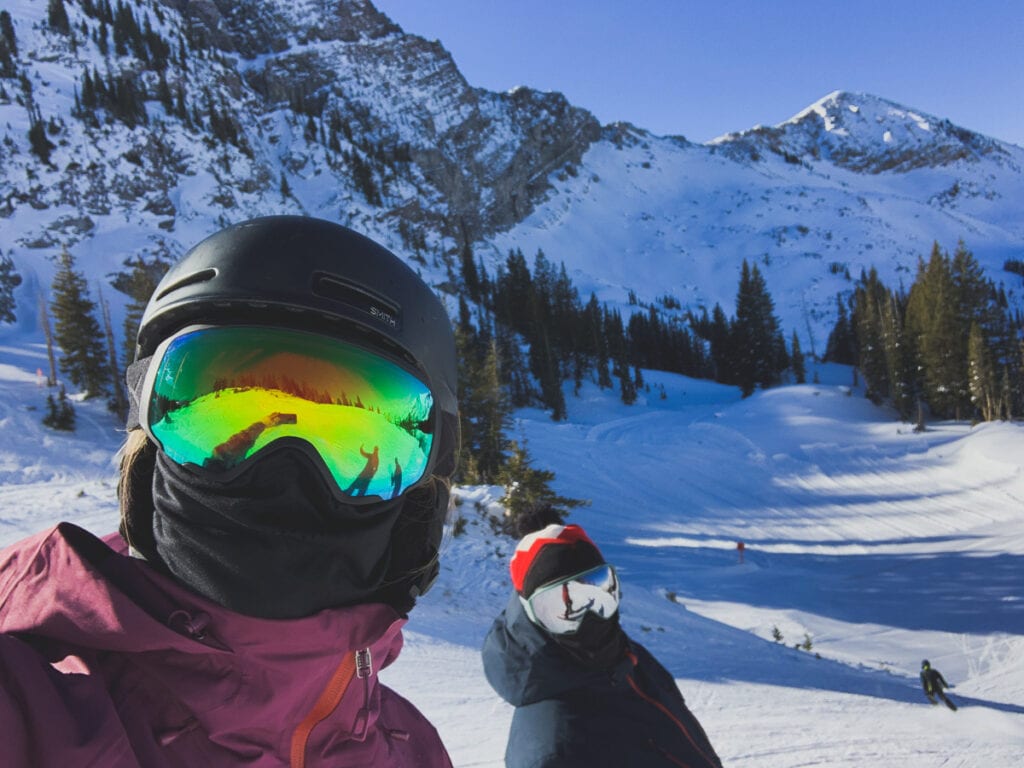
Lens Color & Visible Light Transmission
Ski goggle lenses come in a variety of colors. This isn’t just for looks. The color of the lens actually affects the amount of light that comes through and hits your eye. This is called Visible Light Transmission (VLT). VLT is measured as a percentage and the higher the percentage, the more light that will come through the lens.
- On sunny days, a high light lens, usually colored black, blue, brown, gray and copper-colored, will work like a pair of sunglasses to shield your eyes from UV rays and the bright sun. High light lens typically have a VLT between 5% and 20%
- In the same way, when it’s dark, overcast, or storming, low light lenses, which are typically yellow, gold, amber, green or rose-colored, will provide a clearer view on snowy days. Low light lens have a VLT between 60% to 90%.

If you have the wrong lens for the lighting conditions it can be very hard to see. For example, if you use a low-light lens on a bright sunny day, it will hurt your eyes. On the other hand, a high light lens on a cloudy day will be difficult to see the bumps and contrasts in the snow. For that reason, we highly recommend investing in a pair of ski goggles with lenses for high and low light conditions for the best visibility in all kinds of weather.
Many goggles, like the Smith I/O Mag Chromapop Goggles, now have interchangeable lenses that can easily be swapped out to suit the lighting conditions when you’re on the mountain. Or alternatively, some companies, like Julbo, offer photochromatic lenses that transition with the light so you don’t have to swap out lenses when the weather changes.
Other lens features include a polarized lens to protect from the harsh sun and mirrored lenses to reflect the light away from your eyes.
Anti-Fog technology
Hot air and moisture trapped in between the two reinforced ski goggle lenses produce that annoying coating of a hazy fog from your breath or the conditions. This limits your visibility and is distracting while you’re skiing, so we recommend investing in a pair of ski goggles with good anti-fog technology.
Most ski goggles will already have an anti-fog inner lens coating but it’s a good idea to double-check for that on the product description to be sure. Even then, I’ve never had a pair of goggles that didn’t fog up ever so temper your expectations.
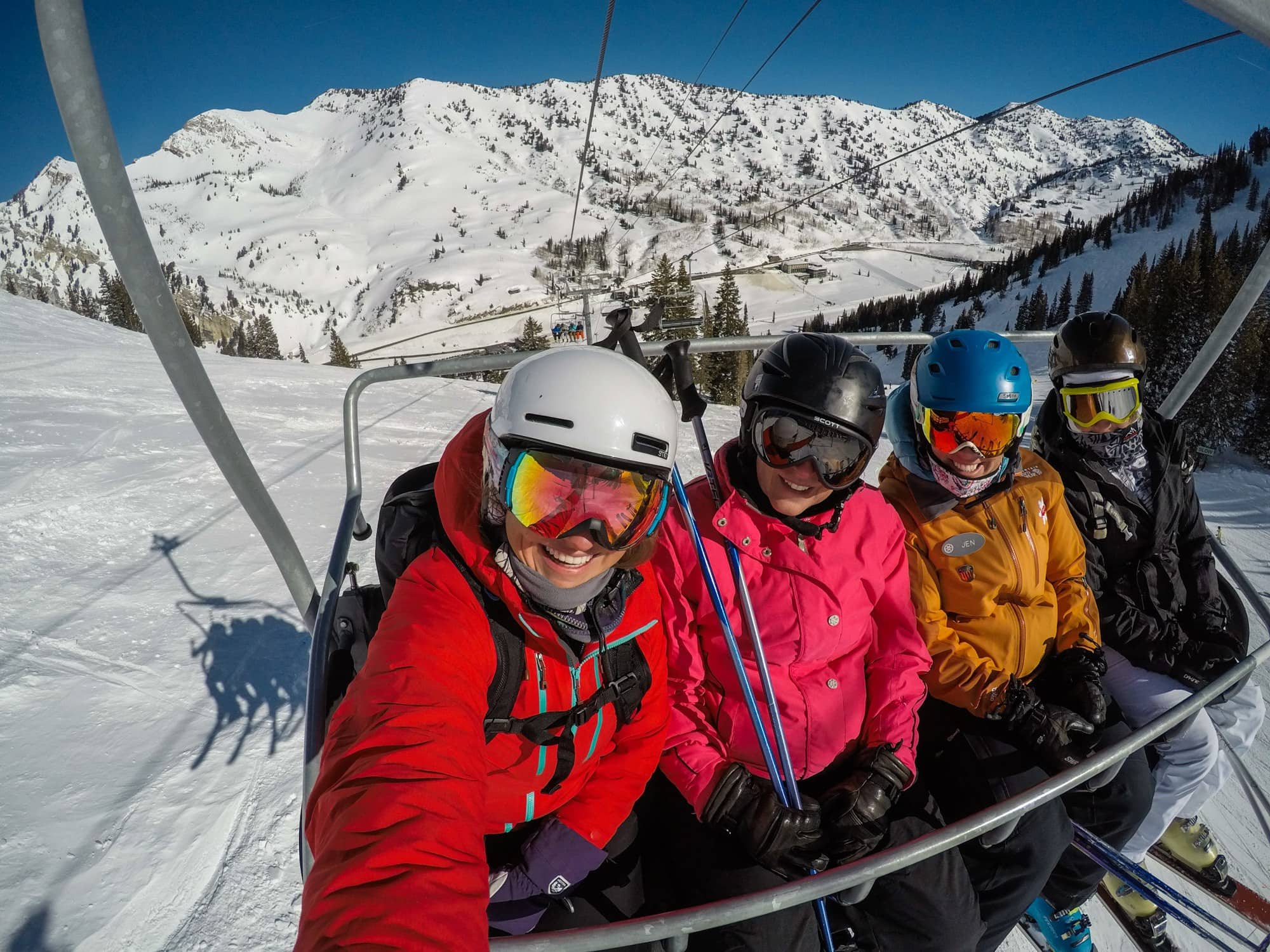
Women’s Ski Goggle Frames and Fit
- Ski goggle size – One of the main differences between women’s ski goggles is size. Wearers can opt for small, medium or large fit depending on the brand. This gives you the choice of how much coverage you prefer and factors into your visibility. A larger fit will provide a broader perspective, plus more warmth and coverage for some, while a smaller size might be a more comfortable fit for those with a smaller face.
- Helmet compatibility – A gap between the top of your goggles and the brim of your helmet isn’t only a bad look, it’s a bad idea for one very important reason: brain freeze. Purchase a pair of ski goggles with helmet compatibility in their product description to avoid this rookie mistake. It’s also optimal to have a ski helmet and ski goggles that are made by the same brand and meant to be worn together.
- Over the Glasses – This is a great option for skiers and riders with prescription glasses. Check the product description to make sure it lists OTS (Over The Glasses) as a feature so you can be confident that you’ll be able to see on the mountain.
- Asian Fit – You may have noticed that some goggles come with an “Asian Fit” model. These goggles, also known as Low Bridge Fit goggles, have an extra layer of foam lining around the nose to accomodate faces with lower nose bridges. This provides a better seal, which prevents slipping and excessive fogging.
What questions do you have about choosing ski goggles? What goggles do you ski with? Leave us a comment below with your thoughts.



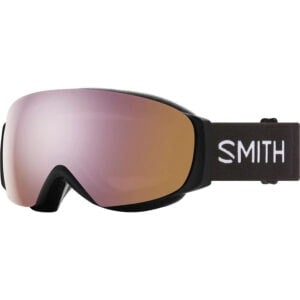

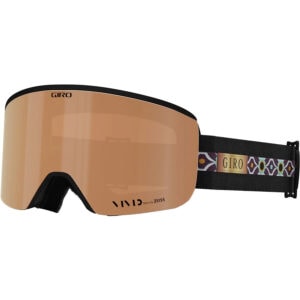

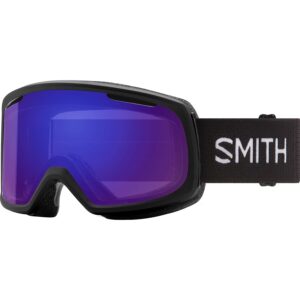

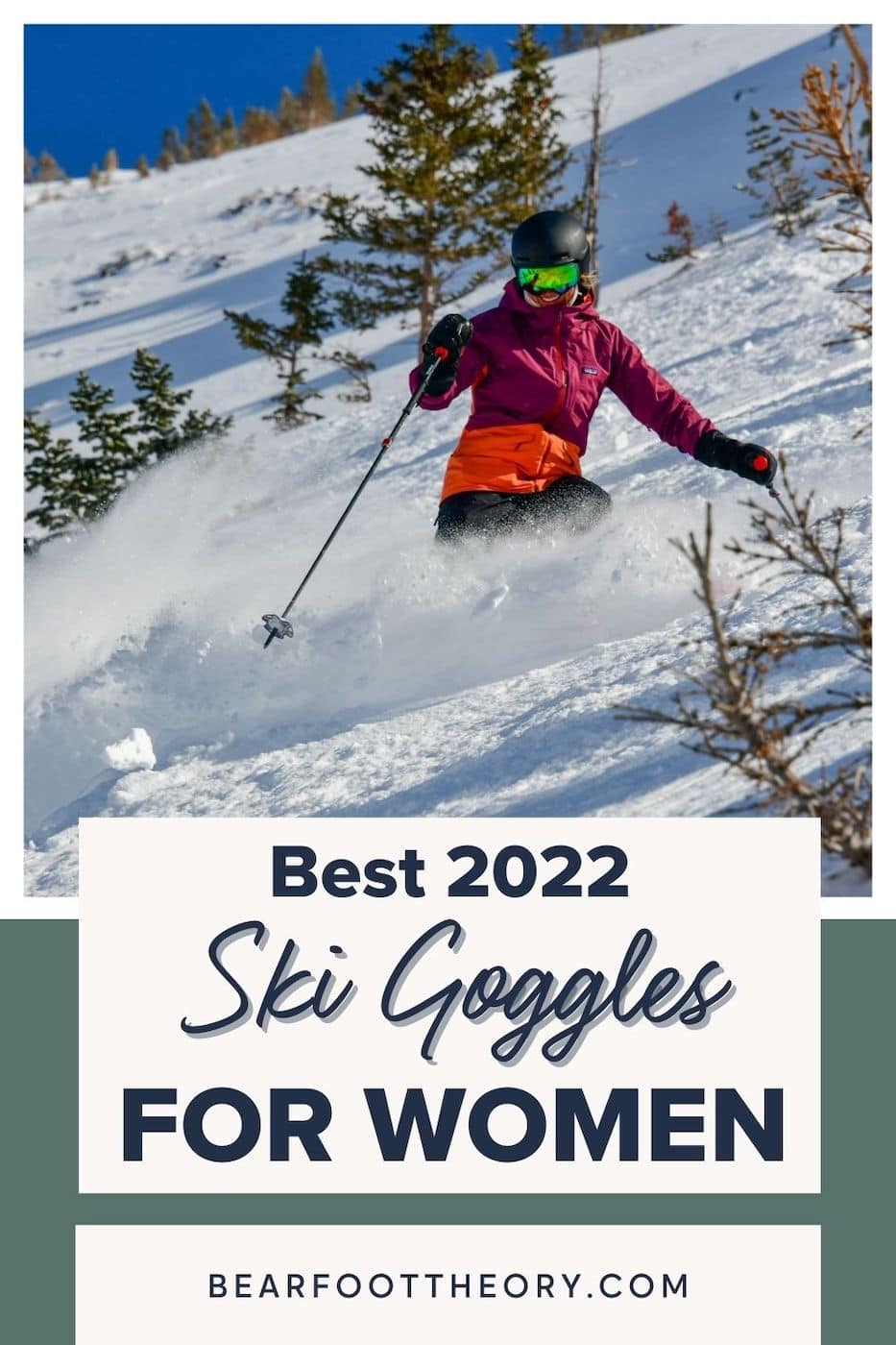
Read it over my first coffee just before going downtown to buy some. Short and to the point. Thanks!
The information provided about ski goggles is very helpful. It will help in choosing the best ski goggles for people.
This article forgot to mention that Sphericals scratch way more easily than Cylindricals… ‘specially when parked on top of the ubiquitous helmet ( don’t get me goin’ on ‘helmets’ ’cause they are right in there with Their SUV’s on the half-gone all-seasons ) And since when did ski-bums blow $250 Bucks on goggles ?